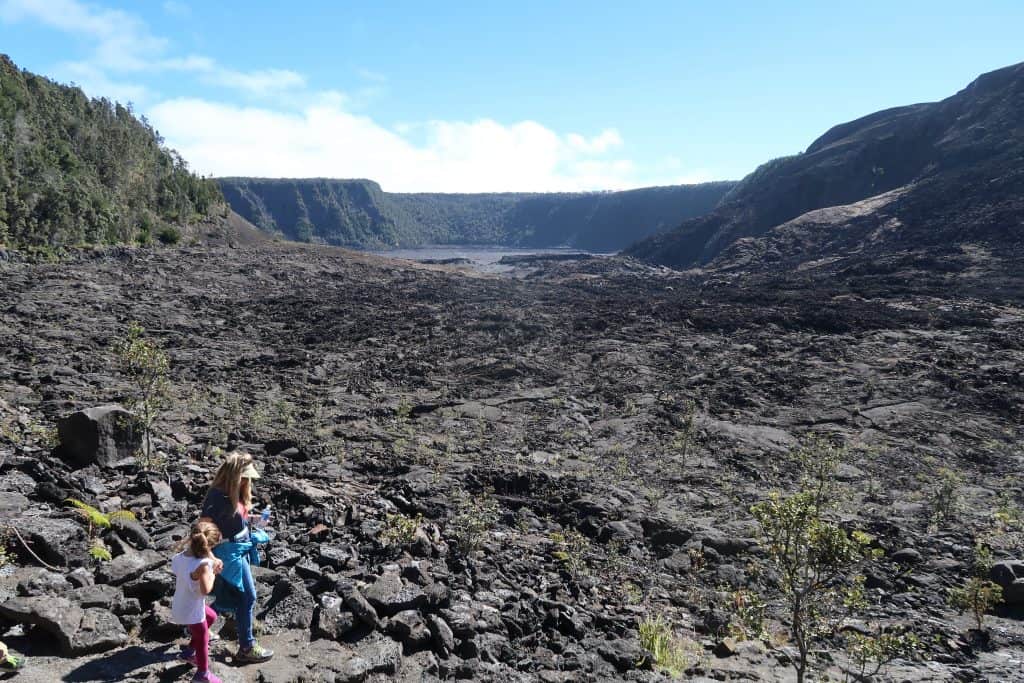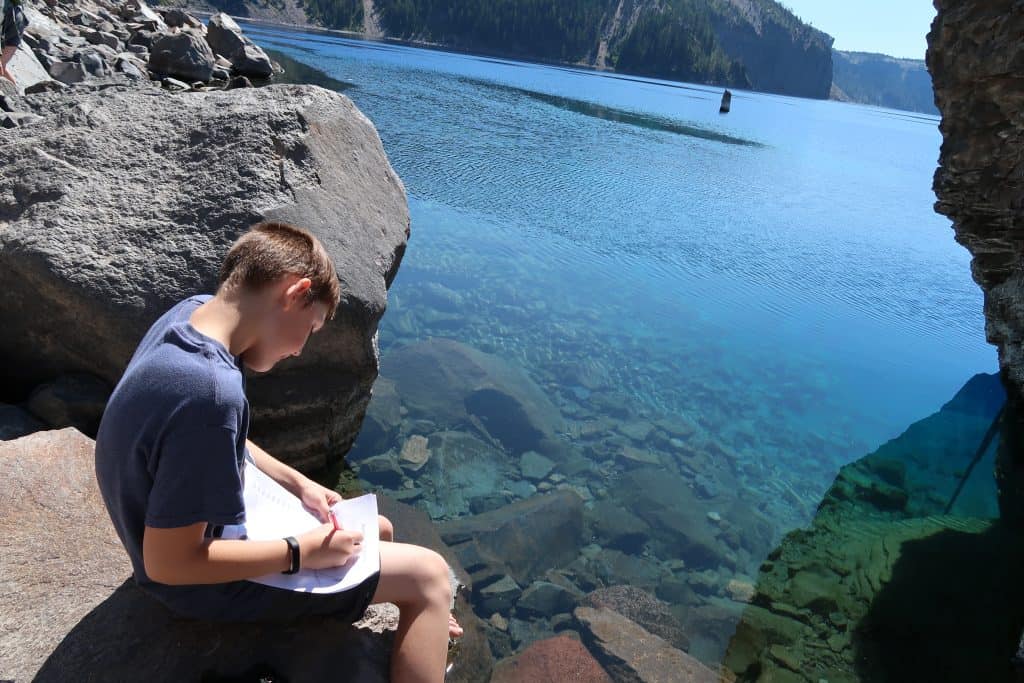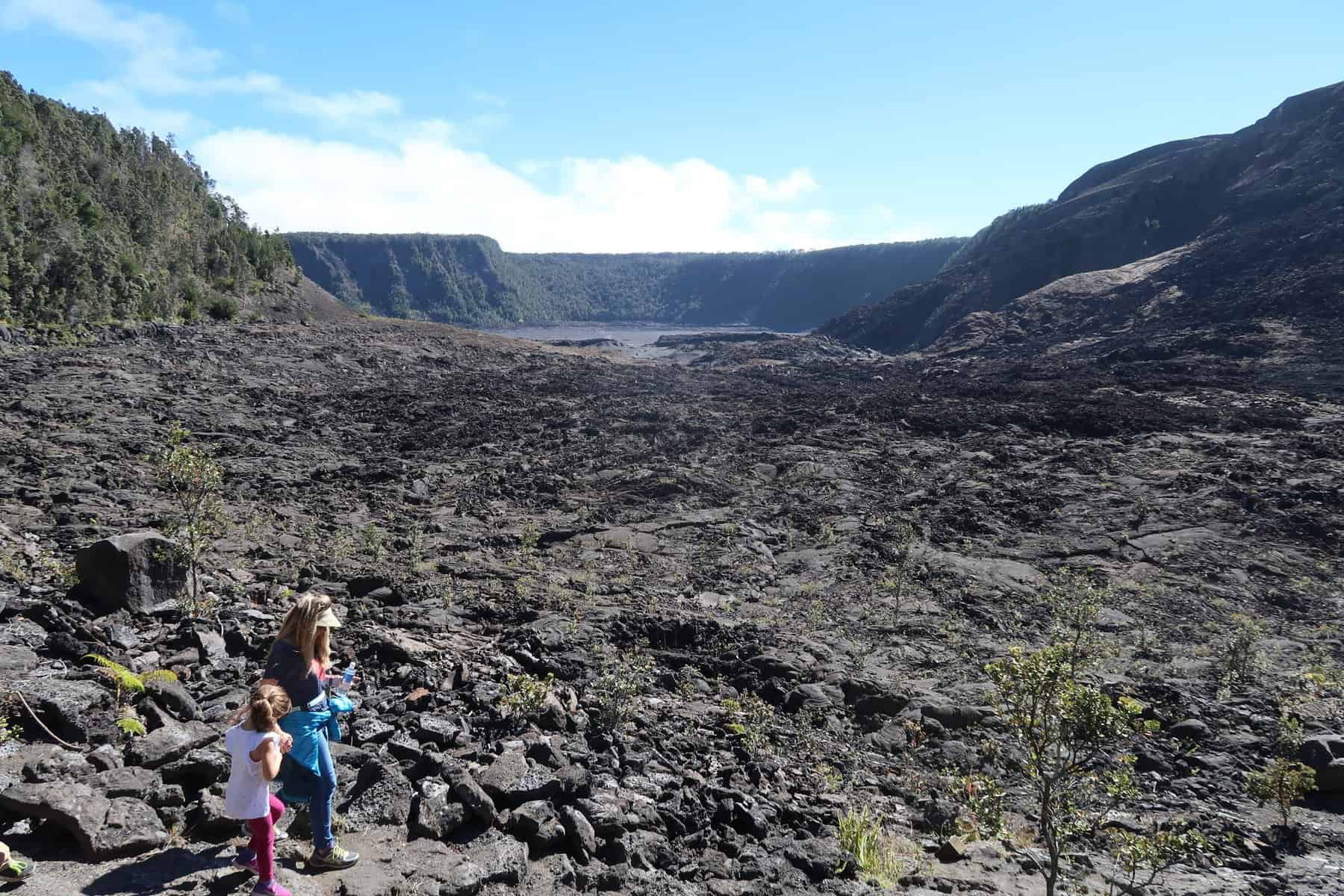The United States is home to some of the most incredible landscapes on earth, and among them are several national parks that contain active and dormant volcanoes. These fiery wonders are not only spectacular to see but also provide valuable insight into the earth’s geological processes. Let’s discover the U.S. national parks that have volcanoes!
1. Hawaii Volcanoes National Park, Hawaii
Hawaii Volcanoes National Park is one of the most popular national parks with volcanoes. It is located on the island of Hawaii and is home to two active volcanoes: Kilauea and Mauna Loa.
Kilauea has been erupting continuously since 1983, making it one of the most active volcanoes in the world.
How to see the volcanoes at Hawaii Volcanoes National Park
Visitors can explore the park’s many hiking trails, including the Kilauea Iki Trail, which takes visitors across a volcanic crater. You can enjoy this trail from three different starting locations: from the Overlook (3.3 mile loop,) the Visitor Center (5.3 mile loop,) or the Devastation Trailhead (6 miles.)
We began at the Devastation Trialhead. This allowed us to include the Nakuku Lava Tubes in the hike. It was a challenge for the kids, who were about seven and ten-years-old at the time, but they both enjoyed it without tears or tantrums!
The Crater Rim Trial is another great options for families to explore. This trail takes you on an easy, flat trail around the rim.
At Hawaii Volcanoes National Park you can also walk through the Nakuku Lava Tube or take a ranger-led tours of the active lava flows.
We strongly suggest that you enjoy this park if given the opportunity!

2. Lassen Volcanic National Park, California
Lassen Volcanic National Park is located in northeastern California and is home to several active and dormant volcanoes. The most famous of these is Mount Lassen which last erupted in 1915.
How to see the volcanoes at Lassen Volcanic National Park
The popular and unique Cinder Cone Trail is a 4-mile round-trip hike up to the summit. It is a moderate hike that ascends a sand-like cinder dune.
Visitors can explore the park’s many hiking trails including the Bumpass Hell Trail. This three-mile, round-trip boardwalk takes visitors to a hydrothermal area with bubbling mud pots and boiling springs.
Visitors can view additional thermal features at Sulphur Works and Boiling Springs Lake. The park also offers ranger-led tours of the volcanic features.
Although it is off the beaten path, this park is not to be missed when you are enjoying other parks in the region. In our experience, it is more of a “sleeper park,” one that is awe-inspiring but rarely publicly discussed. Go enjoy it before the crowds arrive!
3. Mount Rainier National Park, Washington
Mount Rainier National Park is located in the state of Washington and is home to the active volcano, Mount Rainier. The mountain is the tallest in the Cascade Range, standing at 14,411 feet. Visitors can explore the park’s many hiking trails, including the Wonderland Trail, which circles the mountain. The park also offers ranger-led tours of the glaciers and other volcanic features.
How to see the volcano at Mt. Ranier National Park
The Rampart Ridge Trail is a 5 mile loop in the Longmire area of the park. Rampart Ridge, itself, was created by an ancient lava flow.
For those who really love volcanoes, be sure to stop 2.3 miles up Sunrise Road to view the columnar lava formations!
While you are on your tour of the region’s volcanoes, be sure to head three hours south and stop at Mount St. Helens National Volcanic Monument. Be sure to share footage from the 1980 eruption with your kids, so they can appreciate the strength and magnitude of this geologic feature. If they’re interested, share the book from the “I Survived” series!
4. Wrangell-St. Elias National Park, Alaska
Wrangell-St. Elias National Park and Preserve, in south-central Alaska, covers over 13 million acres. The park is home to several active and dormant volcanoes including Mount Wrangell, Mount Sanford, and Mount Blackburn.
Mount Wrangell is the park’s largest and most active volcano, standing at a height of 14,163 feet. It is a shield volcano, which means that its shape is formed by layers of lava flows rather than explosive eruptions. Mount Wrangell most recently erupted in 1900.
Mount Sanford, the park’s second-highest volcano, most recently erupted in 2002, but it was a small eruption that did not pose a significant threat to the surrounding area.
Mount Blackburn is the park’s third-highest volcano. It is built up of layers of ash and lava flows from past eruptions. Mount Blackburn is considered to be a dormant volcano as it has not erupted in over 1 million years.
Wrangell-St. Elias National Park is also home to several other smaller volcanoes and volcanic features such as lava domes and cinder cones.
How to see the volcanoes at Wrangell-St. Elias National Park
Visitors can hike on several trails that lead to the base of the volcanoes where they can get a closer look at their impressive size and beauty.
The most popular hiking trail to enjoy the remnants of volcanic activity at Wrangell-St. Ellias is the Skookum Volcano Trail. It is five miles round-trip with an elevation gain of about 2800′. This is moderately challenging, so you will want to assess your children’s hiking stamina prior to this trek.
The park’s remote location, rugged terrain, and volcanic history make it a truly unique wilderness experience that is not to be missed!
5. Crater Lake National Park, Oregon
Crater Lake National Park is located in southern Oregon and is home to Crater Lake, which was formed by the collapse of a volcano. The lake is one of the deepest in the world, with a depth of 1,943 feet.
How to see the volcanoes at Crater Lake National Park
Visitors can explore the park’s many hiking trails, including the Cleetwood Cove Trail, which takes visitors down to the shore of the lake. This steep, two-mile, out-and-back trail is the park’s most popular trail and the only trail that takes you to the lakeshore, also known as the crater!
To further explore the volcanic past of the park, you should consider taking a seasonal boat tour of Crater Lake. The park also offers ranger-led tours of the volcanic features.
Engage your family with a “challenge” to dip a toe in the freezing water of this beautiful lake!

6. Haleakala National Park, Hawaii
Haleakala, located on the Hawaiian island of Maui, is a shield volcano and one of the most famous geological features in Hawaii. Haleakala’s name means “house of the sun” in the Hawaiian language. It is a popular destination for tourists who come to watch the sunrise and hike in its otherworldly landscape.
Haleakala is one of the largest dormant volcanoes in the world. It is estimated to be between 500,000 and 1 million years old and has erupted several times as recently as the 1700s.
The area around the summit of the volcano is known as the Haleakala Crater, a large depression that is over 2.5 miles wide and 3,000 feet deep. The crater is home to a variety of rare plants and animals such as the silversword plant found only on the slopes of Haleakala.
How to see the volcanoes at Haleakala National Park
There are several trails that offer views of the famous crater. The two most accessible trails include the 0.4 mile round-trip Pā Ka‘oao Trail which begins at the high visitor center. The Keonehe‘ehe‘e offers visitors a hike, down into the crater of 0.5 miles or longer.
Pro Tip: Although Haleakala National Park is in Maui, the summit near the crater is close to 10,000′ in elevation. It is very cold up there! We brought packable, puffy jackets such as this on our Hawaiian adventure to explore this park, and we wish we had brought ear warmers and gloves!
7. Yellowstone National Park, Wyoming, Montana, and Idaho
The caldera of the famous Yellowstone Supervolcano underlies much of Yellowstone National Park. The geothermal activity within this park is diverse and evident at every turn. From fumaroles to mudpots to hot springs, visitors can learn almost anything about volcanoes in this special park!
How to see the volcanoes at Yellowstone National Park
To view the evidence of volcanic activity in Yellowstone, visitors may enjoy the many boardwalk trails over the geothermal waters. Such trails include the famous Grand Prismatic Springs.
The Tower Falls Trail is another hiking trail that is just under one mile, round-trip. It takes visitors to view Tower Falls, a 132′ waterfall. The tall, rock columns that stand across from the Tower Falls Overlook were formed by lava.
The park also offers ranger-led tours of the geothermal features, including Old Faithful.
Yellowstone is a bucket-list destination that we hope all national park fans will have the opportunity to enjoy at least once in a lifetime!
8. Katmai National Park, Alaska
Katmai National Park is a national park located in southern Alaska. It sits atop an entire zone of earthquakes and volcanoes. Katmai is known for its many volcanoes including the Novarupta volcano. Novarupta is the site of one of the largest volcanic eruptions in recorded history which occurred in 1912 and formed the Valley of Ten Thousand Smokes.
How to see the volcanoes at Katmai National Park
The Valley of Ten Thousand Smokes is the best part of Katmai for viewing volcanic activity. It is all backcountry and very remote. We suggest that families explore this region by taking a guided tour hosted by Brooks Lodge or Gold Creek Lodge.
Due to such a short season, tours book quickly. Please ensure that you plan as far in advance as possible to enjoy this special region of Katmai National Park.
9. Death Valley National Park, California
The Ubehebe Crater is a large volcanic crater located in the northern region of Death Valley National Park. It was formed by a violent steam explosion that occurred about 800 years ago. It is approximately half a mile wide and 500 feet deep, making it one of the largest craters of its kind in the world.
Over time, the crater has become a popular tourist attraction and a site of scientific interest. Scientists have studied the rocks and ash within the crater to gain insight into the history of volcanic activity in the area.
How to see the volcano at Death Valley National Park
Visitors can hike around the rim of the Ubehebe Crater. The Ubehebe Rim Trail is around 1.5 miles and relatively easy. It is important to note that Death Valley has variable road conditions.
We suggest that you stop at a ranger station or visitor center and ensure that your path is clear. We could not access this portion of the park on our last visit to Death Valley.
These are just a few of the national parks in the US that have volcanoes. Exploring these parks is not only an exciting adventure but also a chance to witness the power and beauty of nature’s fiery wonders.
With hiking trails, ranger-led tours, and other activities, these parks offer something for everyone, from the casual observer to the experienced geologist. So, pack your bags and get ready to experience the thrilling adventure of exploring the fiery wonders of the U.S. national parks!
*This post contains an affiliate link.

